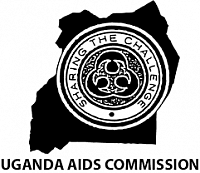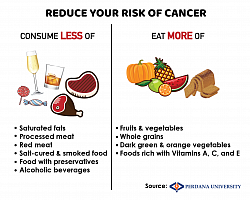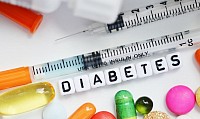A LOOK AT THE MOST CHALENGING DISEASES IN UGANDA
A REPORT FROM THE UGANDA AIDS COMMISSION.
For close to the 37 years, HIV has been one of Uganda’s highest burden infectious diseases causing both mortality and morbidity in varying proportions. By 2016, Uganda had an HIV prevalence of 6.2% among adults aged between 15-49; an estimated 1.3 million adults and 96,000 children living with HIV (UNAIDS report 2016, UPHIA 2016-2017). The government of Uganda continues to work with several donors, collaborating institutions and civil society organizations to provide lifelong treatment. Out of the 1.3 million PLHIV, 1.1 million are accessing ART. Despite the great success of enrolment of many PLHIV on treatment, stigma and discrimination remains a structural barrier to HIV prevention efforts.
As part of the national effort to address stigma and discrimination, NAFOPHANU has continued to rally several Government ministries, Civil Society Organizations (CSO), Community-Based Organizations (CBO) and funding agencies like UNAIDS, Embassy of Ireland and Population Council to lead country-wide efforts to reduce HIV related stigma through several social behavioral interventions including, knowledge sharing, capacity building, advocacy at policy level and research about HIV related stigma. The execution of the serialized PLHIV stigma index studies to determine forms and trends in HIV stigma and inform programming is another key strategy which NAFOPHANU has spearheaded over the last seven years. The strategies targeted; policy reforms, advocacy for improved HIV related services, capacity building, stigma reduction interventions and mobilization of beneficiaries and stakeholders to practice and/or promote positive living.
In 2019, with support from the Embassy of Ireland through the Prevention of HIV&AIDS in Communities of Karamoja (PACK) Project, NAFOPHANU implemented the 2019 People Living with HIV Stigma Index survey reaching 1398 People Living with HIV (PLHIV) in 9 regions of Uganda covering 21 districts. The Stigma Index (SI) is a quantitative survey in which PLHIV are both the interviewers and the respondents. These experiences are for the last 12 months.
A CANCER REPORT FROM THE MINISTRY OF HEALTH. UGANDA.
FROM A PDF BY THE MINISTRY OF HEALTH. UGANDA.
Facts About Cancer in Uganda
Introduction Cancer is a growing health problem in Uganda. Cancer affects any part of the body. There are different types of cancers due to different risk factors. Cancer can affect anybody, but this is influenced by one’s behaviour, and/or exposure to risky conditions/environment.
Although cancer is a serious health problem leading to suffering and death it can be prevented and controlled if detected early. This booklet provides you with useful information to help you protect yourself.
What is Cancer?
Cancer is a chronic disease in which body cells grow abnormally (proliferate) and spread out of control to other parts of body. Cancer is also referred to as a swelling (tumor) or new growth (neoplasm). It begins in your cells, which are the building blocks of your body. Most cancers are named for where they start. For example, lung cancer starts in the lung, and breast cancer starts in the breast.
What causes Cancer?
The causes of cancer are not known but there are risk factors that contribute to the abnormal and uncontrolled growth of body cells. These cells later spread to other parts of the body if not detected and treated early.
The common causes of cancer referred to as risk factors are;
1. Factors within the body (Intrinsic factors). These include acquiring it from the family lines (heredity), hormones and diet. 2. Factors outside the body (Extrinsic factors). These are exposure to chemicals (e.g. tobacco smoking), radiation, viruses and bacteria.
What are the common types of cancers in Uganda?
The common cancers in Uganda are Cervical Cancer, Prostate cancer,Breast Cancer, Kaposis sarcoma, Burkitt’s lymphoma, lung cancer, skin cancer, Cancer of the bone, cancer of the eye, Cancer of the colon, and cancer of the blood.
What are the signs and symptoms of Cancer?
Different cancers present differently. It is advisable to consult a health worker for all illnesses because even what appears to be a common illness may be cancer. Commonly however, cancer can present as a swelling or a mass in any part of the body, unusual loss of blood from the body, body pains or aches, body weakness, unusual fevers and weight loss. In most cases, presentation depends on the system or organ affected by the cancer. For example cancer of the gullet will present with swallowing problem, cancer of the stomach will present with heart burn, cancer of the lung will present with cough and difficulty in breathing. The commonest general presentations are recurrent fevers, weight loss and fatigue. In most cases these symptoms are recurrent and not responsive to the usual treatment you are used to for these symptoms. This usually causes delay in making diagnosis since most people first treat themselves and after failing then they see a doctor. For any symptom therefore the health worker must be seen immediately and the possibility of cancer must be considered at all times and investigation to determine if it is a cancer or not should be done and there should be no delay advising the patient accordingly.
How is cancer treated?
Cancer treatment can be done in different forms depending on the stages of the disease. This can be through operation (surgery), treatment ( chemotherapy) with medicines, or radiation and supportive care (palliative)— or sometimes a combination of these treatments.
The choice of treatment depends on:
• the type of cancer someone has (the kind of abnormal cells causing the cancer)
• the stage of the tumor (meaning how much the cancer has spread within the body, if at all)
How can cancer be prevented?
The first step in cancer prevention is identification of risk factors and reduce exposure to these factors through behavior change or instituting preventive measures;
– Behaviors/lifestyle. These could be tobacco smoking, excessive alcohol taking, poor/non regulated feeding habits.
– Exposure to chemicals (carcinogens). This can be in work places where the workers are not protected against exposure to harmful industrial chemicals and their byproducts and radiation.
– Exposure to germs (viruses and bacteria.) These can cause infection which might develop into cancer. E.g.: malaria which may lead to Burkitts lymphoma(to include illustration of the risk factors)
Points to remember.
• Cancer is a long term and a complex disease.
• Knowledge of the risk factors (e.g. smoking, unregulated eating habits, exposure to radiation and chemicals) are key to prevention efforts
• Prevention strategies can be applied at individual, family and community level: - Avoid tobacco smoking - Eat little fats and calories - Get young girls who have not had sex before, vaccinated against the virus that causes cancer of the cervix - Use protective ware in risky work places such as factories and industries.
In case you detect or feel any abnormal growth and swelling in any part of your body, this could be a sign of cancer, consult the nearest qualified health worker for advice and proper management. If you detect any abnormal swelling and growth on any part of your body seek attention from the nearest health unit
DIABETES
FROM THE MINISTRY OF HEALTH. UGANDA.
Diabetes Diseases:
Introduction
Diabetes Mellitus is an abnormally high blood glucose (sugar) level caused by the inability of the body to either produce or respond to insulin properly. Insulin is a hormone that carries glucose from the blood stream into the body cells where it is used for energy. If there is too little insulin, blood glucose level continues to rise because the glucos is not removed from the blood stream.
What causes Diabetes?
Diabetes is caused by lack of, reduced amount or resistance to insulin. This results into life-long (chronic) disorder of glucose, fat and protein use by the body. Types of diabetes There are four known types of diabetes i.e. Type 1, Type2, gestational and nutritional.
1) Type 1 diabetes is also known as insulin dependant diabetes and it accounts for about 10% of all diabetic cases in Uganda. It generally occurs in children but is usually diagnosed before the age of 40 years. These individuals do not produce enough insulin and therefore they need life-long treatment with insulin. Type 1 diabetes is more difficult to control than the other types.
2) Type 2 diabetes is also called non-insulin dependant. This type of diabetes is very common among adults and is often associated with obesity. Eighty percent (80%) of all the people suffering from the type 2 diabetes are either over weight or obese. Type 2 diabetes can be controlled by a healthier diet and exercise.
3) Gestational diabetes usually occurs during pregnancy and disappears after child birth. It develops as a result of hormones released during pregnancy that increase the body’s resistance to insulin. Women who have had this form of diabetes also face a higher risk of developing type 2 diabetes later in life.
4) Nutritional diabetes is common among poor people who eat a lot of cassava without any protein.
How do you tell that one has diabetes? (Signs and symptoms)
A person who has diabetes usually experiences the following:
• Always feels thirsty and his/her mouth feels dry
• Feels hungry all the time
• Urinates more frequently than normal including at night
• Begins to lose weight Diabetes Diseases
• May not see clearly
• Feels frequent itching around the private parts
• Always feels tired
• Has frequent skin infections How can you be sure that it is diabetes?
(Diagnosis) Diabetes can only be confirmed in a health unit by a qualified health worker. A simple dip-stick test can detect glucose in a sample of urine. If you have glucose in your urine it is likely that you have diabetes. However, some people have kidneys that are weak and glucose may leak into urine with normal blood glucose level. Therefore, if your urine contains any glucose you should have a blood test to check for diabetes. This can confirm or rule out the disease. It should be remembered that the normal blood glucose level is 4-6 mmol/dl. What are the possible dangers of diabetes? Those with uncontrolled diabetes can experience complications as the disease progresses.
The dangers are categorised into two: Short and long term. Diabetes Diseases Short term Diabetic people may be more susceptible to infections and in severe cases it can cause dehydration, drowsiness and coma. Long term The following problems could arise a. Damage to blood vessels which may lead to poor blood circulation, heart attack and stroke b. Damage to the kidneys c. Gradual damage of the nerves d. Eye problems which can affect the vision e. Foot problems due to poor blood circulation and nerve damage like ulcers, infections and gangrene leading to amputation f. Impotence What are the factors that may put you at the risk of getting diabetes?
The following factors may lead a person to getting diabetes:
• Borne in a family with history of diabetes and therefore stand the risk of developing the disease Diabetes Diseases
• Eating unhealthy diets high in fat, low in fibre and with little or no starchy foods, fruit or vegetables
• Being over weight and obesity
• Lack of or Limited physical activities
• Cigarette smoking
• Heart diseases
• Aging Diabetes Diseases Common conditions in diabetic patients A person with diabetes may experience either too low or too high blood glucose level. This can cause problems to the patient. High blood glucose level (hyperglycaemia) This is caused by eating too much of the wrong foods (fatty foods, low vegetable and low fruit intake), feeling stressed, being anxious or emotional, not taking any or sufficient insulin, not taking medications appropriately and skipping exercises. A person may experience thirst, frequent urination, tiredness and weakness, blurred vision (difficulty in seeing) and even coma Diabetes Diseases
Low blood glucose level (hypoglycaemia) This is caused by eating too little food like; carbohydrates, delaying and skipping meals or snacks, exercising harder or longer than usual (over one hour), taking too much insulin or medication, being ill or drinking alcohol on an empty stomach. A person with low blood glucose level usually experiences, paleness, sweating, feels like vomiting, headache, difficulty in seeing, unusual rudeness or laughter, bad temper, and confusion that may progress to aggression, fainting, convulsion, or even death. Can diabetes be cured? Diabetes is a chronic disease which has no cure. However with careful and committed monitoring, people with the disease can avoid complications and enjoy good quality life.
Prevention of diabetes Diabetes can be prevented through
• Weight monitoring and control
• Regular blood pressure measurement 10 Diabetes Diseases Health worker taking blood pressure
• Avoiding cigarette smoking
• Regular exercises: Diabetes Diseases 11
• Controlling blood cholesterol level through eating healthy foods like vegetables, fruits, low fat diet, plenty of starchy foods
• Avoid excessive alcohol consumption
Key messages on Control of Diabetes:
1. Eat higher fibre-carbohydrate foods. (whole wheat bread, millet, sorghum)
2. Eat more of the green leafy vegetables
3. Minimise eating refined sugars, sugary foods, fats and salt. 12 Diabetes Diseases
4. If you drink alcohol do so in moderation (small quantities)
5. Monitor your weight regularly to establish the risk of getting diabetes. A person taking a weight meassurement
6. Eat small and regular meals-do not miss any meals
7. Do regular exercises i.e. 30-60 minutes at least 5 times a week.
8. Take 6-8 glasses (tumpeco)of water per day
9. Reduce eating of processed foods such as tinned and packaged foods, salty meats, potato or cassava chips and salted nuts






